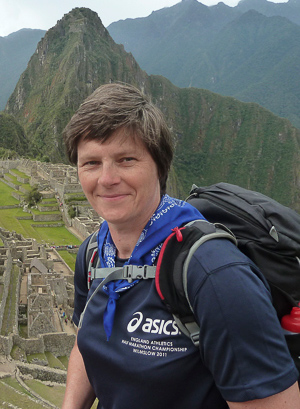Stakeholders from across the veterinary professions come together to discuss the future of EMS
24 November 2021
On Monday 22 November, current vet students, newly qualified vets, veterinary employers and representatives from vet schools and the wider profession attended the RCVS Extra-Mural Studies (EMS) Stakeholder meeting in central London to discuss what extra-mural studies (EMS) could look like for future veterinary students.
During the first half of the day, several speakers outlined the current challenges EMS presents veterinary students with and the impacts it can have on their studies and early experiences with the profession. Some of the challenges that EMS in its current format is facing include the rise in the number of vet students every year means a higher demand for EMS placements, inaccessibility of certain EMS placements for students and the financial impacts of undertaking 38 weeks of unpaid placements.
However, speakers also outlined the many positive aspects of EMS that they and their peers had experienced during their studies. Several students and newly qualified vets also spoke about their enthusiasm for their EMS placements, with one citing it as the best part of their veterinary education. They talked about how their recent EMS placements had given them the opportunity to work in a range of environments and how the experience taught them how to react to and learn from their mistakes.
I want to thank everyone for sharing their stories of positive EMS experiences, as well as the challenges encountered. Our task ahead will be to develop a future model for EMS that addresses the obstacles that many students face when completing their placements, whilst also preserving the positive aspects of EMS that many students and practices alike have benefited from - Dr Sue Paterson, Chair of the RCVS Education Committee
Speakers including Dr Kate Richards, RCVS President and Dr Sue Paterson, Chair of the RCVS Education Committee, also discussed how EMS helps to improve the confidence of veterinary students and prepares them for their first role as a vet. They described how their own EMS placements had given them opportunities to practise their observational skills, learn how to have challenging conversations with clients and understand how to deal with sensitive situations effectively.
The benefits of EMS placements for vet practices were also discussed, with many practices outlining how they have used EMS placements to recruit new members of staff, appreciate having an extra team member to support their practice’s day-to-day work, and benefit from new insights that a vet student can bring. However, as many practices have been impacted by the pandemic and staff shortages, they have found that delivering EMS placements in-person is increasingly challenging.
Throughout the second half of the day, delegates were split into groups to discuss several proposed future models for EMS. The models which were discussed included:
- An enhanced, outcomes-based quality assured EMS experience, with the potential to reduce the number of weeks of EMS required to help meet the demand for places.
- A model where formal and structured EMS placement plans are provided for all students to access at different times in the programme, which gives students the chance to practise their skills and consolidate their learning.
- Create more initiatives that increase the availability of EMS placements and the number of workplaces offering EMS by encouraging and providing incentives for workplaces to offer placements for students.
- Brand new ideas for an approach to EMS, or something in its place. During this session, delegates were encouraged to put forward their own ideas for what the future of EMS could look like.
Dr Sue Paterson (pictured), Chair of the RCVS Education Committee, said: “This was our biggest gathering to date of representatives from veterinary students, schools, employers and organisations discussing EMS and it was encouraging to hear a diverse range of opinions on what the future of EMS could look like. I want to thank everyone for sharing their stories of positive EMS experiences, as well as the challenges encountered. Our task ahead will be to develop a future model for EMS that addresses the obstacles that many students face when completing their placements, whilst also preserving the positive aspects of EMS that many students and practices alike have benefited from.
date of representatives from veterinary students, schools, employers and organisations discussing EMS and it was encouraging to hear a diverse range of opinions on what the future of EMS could look like. I want to thank everyone for sharing their stories of positive EMS experiences, as well as the challenges encountered. Our task ahead will be to develop a future model for EMS that addresses the obstacles that many students face when completing their placements, whilst also preserving the positive aspects of EMS that many students and practices alike have benefited from.
“During the workshops where delegates discussed the three suggested options and their own ideas for future EMS models, there were some strong preferences towards certain models over others. We’ll be taking all the feedback we received and using it to create a report that will be put forward to the RCVS Education Committee, which will use it to create new models for EMS development. These will be shared with the profession next year, and we look forward to continuing to work alongside students, schools, employers and other stakeholders to create an EMS model that provides a learning experience that is as effective, accessible and valuable as possible.”